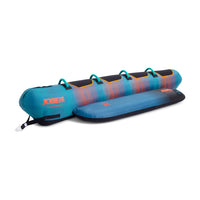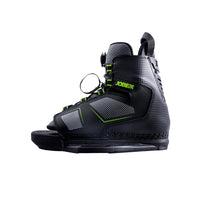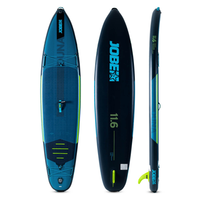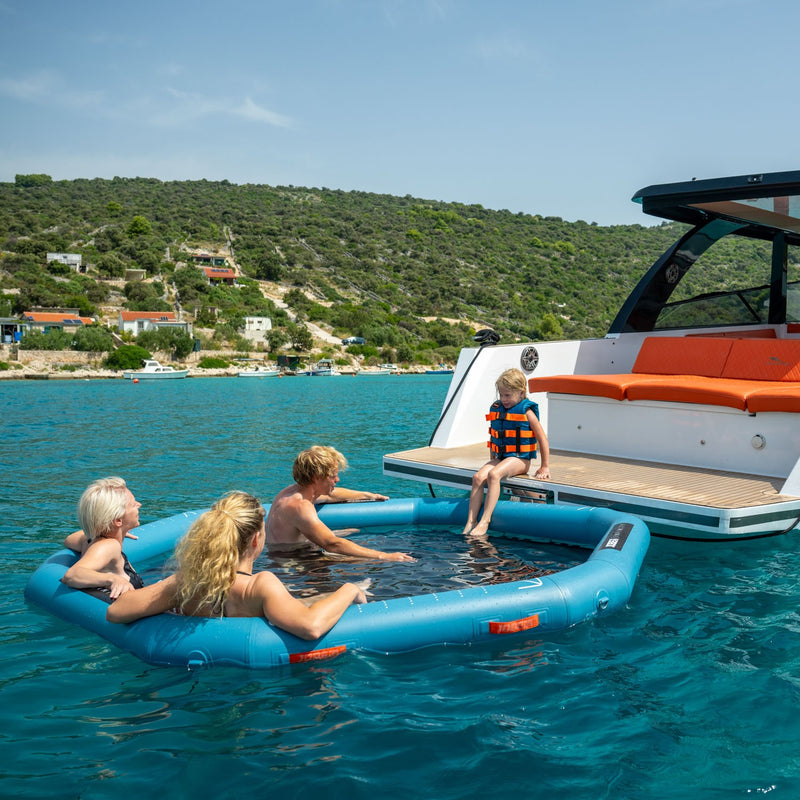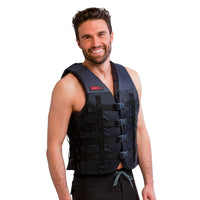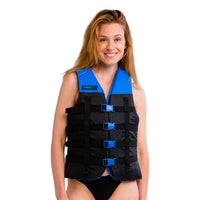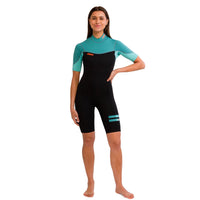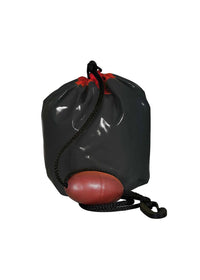
Ultimate Wakeboarding Guide (2024)
Wakeboarding: The Ultimate Guide (2024)
Wakeboarding is a super fun and exciting water sport that combines elements of snowboarding, surfing, and water skiing. It involves riding a small board while being towed behind a boat at high speeds. As the boat pulls you along, you can carve and jump through the boat's wake, performing tricks and stunts along the way.One of the coolest things about wakeboarding is that it's incredibly versatile - you can do it on just about any body of water that's big enough to accommodate a boat. Whether you're out on a calm lake, a narrow canal, or a wide river, there's always a new challenge to be found.
But beware: wakeboarding can be a bit addictive! Once you get the hang of it, you'll find yourself wanting to spend every free moment out on the water, trying out new tricks and pushing your limits. So, if you're looking for a thrilling new adventure that's sure to get your adrenaline pumping, give wakeboarding a try!

How to wakeboard?
To wakeboard, you will need a few things, including a wakeboard, a boat, and a life jacket. Once you have all of the necessary equipment, follow these steps:1. While on the dock, place your board on the water and make sure to get the bindings wet to help get your foot in.
2. Step into the board with one foot slightly forward and the other on the back of the board.
3. Which foot you want to have on the front and back depends on your own personal preference, so give it a try! Though for most it works well to have their dominant foot on the back. Quick tip for those that don’t know which foot their dominant foot is, ask one of your friends to give you a small nudge in the back and see which leg you step forward with.
4. Once you are in the water, hold the handle with both hands and let the boat driver slowly tow you forward. Keep your knees bend and your hands forward and try slowly to get up. Once you get up, you can let the boat driver take you to your preferred speed.
5. Once you are moving, bend your knees and lean back slightly to help maintain your balance.
6. To steer, push either your heel or the edge of your toes of the board in the water and lean in that direction to steer the board
7. Once you feel comfortable, try doing some basic tricks, such as jumping, grabbing or even spinning.
Remember to always wear a life jacket and safety helmet and follow all safety guidelines when wakeboarding. Have fun!
 What wakeboard size do I need?
What wakeboard size do I need?
The size of wakeboard you need depends on a variety of factors, including your weight, skill level, and riding style. In general, heavier riders or those who prefer a more aggressive riding style will need a larger wakeboard, while lighter riders or those who prefer a more relaxed riding style will need a smaller wakeboard. Here’s a size chart to help you determine the appropriate size wakeboard for you:.png)
What kind of boat do I need?
1. Preparing the boat:
- Almost any boat is able to tow a wakeboarder, although there are some guidelines which you should follow. Firstly, the tow rope needs to go through an attachment point at the back of the boat. With an inboard engine, you can attach the tow rope pretty much anywhere on the back-half of the boat. With an outboard engine, you need to keep in mind that the rope, board and rider always need to steer clear from the engine, more specifically, the propellor. In order to stay safe, riders can attach a bridle to the back left and back right of the boat, leading to a point in the middle where to towing rope can be attached. As for engine size, as long as the boat has enough power to keep the rider standing, you’re good to go.
- The optimal speed for wakeboarding typically ranges between 18 to 24 miles per hour (29 to 39 kilometers per hour). However, the specific speed may vary depending on the rider's preference, skill level, and the boat's wake shape.
- Experiment with different speeds to find the sweet spot that allows the rider to maintain control and perform tricks while enjoying a good-sized wake.
- Always wear a properly fitted, ISO-certified life vest when wakeboarding. Safety should be the top priority.
- Ensure the boat's driver and spotter are experienced and knowledgeable about towing water sports and understand hand signals for communication with the rider.
- Establish hand signals for communication between the rider and the boat's occupants. Clear communication is crucial to ensure everyone's safety. For example, once the boarder has fallen, a simple thumbs up can show the people on the boat that the boarder is fine and not in need of an emergency pick-up.
- Before towing a rider, make sure the area is clear of any obstacles, such as rocks, buoys, or other boats. Maintain a safe distance from shorelines, docks, and swimming areas.
- Be mindful of other boaters, swimmers, and water sports enthusiasts.
- Observe local boating regulations and laws. Understand the right of way, no-wake zones, and speed limits enforced in your area.
- Respect the environment by properly disposing of trash and avoiding the release of pollutants or contaminants into the water.
Once all the necessary safety precautions have been taken, it’s time to have some fun!

Which wakeboard is best for me?
Though our wakeboards are divided under skill level, this is just a recommendation. A pro can give the preference to a board meant for experienced riders and vice versa.The right wakeboard for you will depend on a variety of factors, including your weight, skill level, and riding style. In general, heavier riders or those who prefer a more aggressive riding style will need a larger and sturdier wakeboard, while lighter riders or those who prefer a more relaxed riding style will need a smaller and more flexible wakeboard.
Here are some factors to consider when choosing a wakeboard:
- Size: As mentioned above, the size of the wakeboard should be based on your weight and riding style. A larger wakeboard will provide more stability and control for heavier riders, while a smaller wakeboard will be more manoeuvrable and easier to control for lighter riders.
- Shape: The shape of the wakeboard can also affect its performance. Some wakeboards are designed for a more aggressive riding style and have sharp, angled edges for quick turns and high-speed carving. Others are designed for a more relaxed riding style and have rounder edges and a more forgiving flex pattern.
- Construction: Wakeboards are typically made from a combination of wood, foam, and fiberglass. The type of materials and the way they are put together can affect the weight, flex, and durability of the wakeboard. Look for a wakeboard that is well-constructed from multiple layers and designed to withstand the rigors of regular use.
- Bindings: The bindings on a wakeboard are the part that you will be standing on, so they are an important consideration. Look for bindings that are comfortable and secure. Some bindings are adjustable, which can be helpful if you are sharing the wakeboard with others.
Overall, choosing the right wakeboard is a matter of finding a balance between size, shape, construction, and bindings that will suit your weight, skill level, and riding style. It may be helpful to try out several different wakeboards to see which one feels the most comfortable and responsive.
Beginners
Jobe Vanity - This classic, tried and true model is truly one of the greats. Featuring a high-press core, moulded in fiberglass fins and deep grooved channels, the Vanity keeps you in control with any trick you want to throw down. A continuous rocker gives you a relaxed feel and speed on the water.
Jobe Logo Series – Featuring a high-press core with double concave bottom for smooth landings, the Logo Series keeps you in control with any trick you want to throw down. Its’ 3-Stage rocker shoots you up high and brings you down softly thanks to a center spine for a smoother landing.
Experienced
Jobe Maddox - The Maddox is made for constant performance. Deep grooved channels give this board unmatched grip and control for big loading combined with the aggressive 3-stage rocker this board will shoot you into the air! The Jobe Maddox makes for an aggressive boating board with a direct response, for the rider who wants to jump HIGH.
Jobe Prolix (2023)- The Jobe Prolix is a wakeboard ahead of its time. Featuring innovative tech like our High-press Core, Rolled Edges for added playfulness and less edge catching, H.I.T. Base, and grooved channels from tip to tail for additional traction. This hybrid rocker provides a fun playfulness to the board without losing pop.
Jobe Vertex - Provided with Backbone Tech: High tech advanced placing of carbon rods to boost the feel and response and give the board extra stiffness. Next up this board has a continuous rocker for a relaxed feel and high speed on the water. On top of that, this wakeboard has a breaking spline that breaks the water for soft landings.




